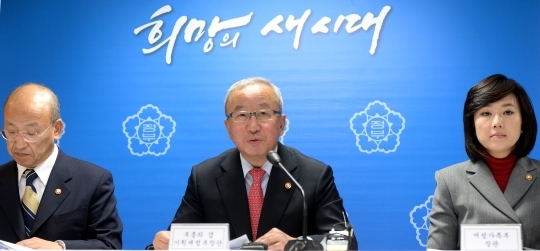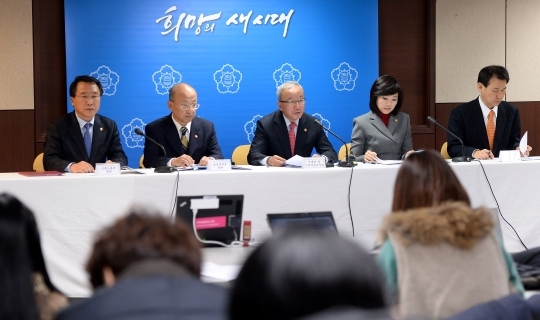The first full-fledged policy backed by different branches of the government
Women activists seek fundamental measures, while business leaders are concerned about a shrink in female employment

On February 4, the government proposed its plan to assist women’s participation in economic activities in accordance with their life cycle. This is a meaningful attempt in that numerous branches of the government pulled together for the first time to combine all the relevant measures that were administered by different departments. Also, the initiative is part of a bigger picture to raise awareness that child-care is a common responsibility for both parents. People from all walks of life welcomed the move.
However, in reality, in small businesses with fewer than 100 employees, 80% of which are females, pregnant women are not encouraged to take child-care leave. In fact, they are forced to resign. As such, corporate practices come before the Act on Equal Employment and Support for Work-Family Reconciliation. Some point out the need to change the situation by ensuring that the current measures are implemented successfully.
The government’s initiative aims to help women participate in economic activities in line with their life cycle, from pregnancy to childbirth, child-rearing, reemployment and child-care at the workplace.
When parents in a double-income family use parental leave, they are eligible for a maximum wage of KRW 1.5million. The measure is expected to raise the parental leave take-up rate among fathers to around 10%. However, this is not as drastic as President Park’s promise to guarantee a one-month-long full-paid parental leave for men. To encourage more men to use child-care leave, the government will start using the term ‘parental leave’ officially.
When a worker opts to work shorter hours instead of taking parental leave, wages paid will be raised to 60% of regular pay, up from the current 40%. Also, a worker is allowed to reduce the working week for two years.

“I hope that the government’s scheme will clear obstacles for women to work without any fear of career discontinuity,” said Kim Jeongsook, the president of the Korean National Council of Women(KNCW). Kim Keumok, the standing representative of KNCW emphasized, “The solution to career discontinuity is making employment more stable. To that end, we have to motivate fathers to take part in child-care and the society as a whole needs to provide support, going well beyond helping women find balance between their work and family.”
On the contrary, the Korea Employers Federation noted, “We do understand the need to enhance women’s participation in the economy and to prevent their career discontinuity. At the same time, however, employers might reduce female employment because of the recently announced plan.” This reflects a view that the scheme did not take full consideration of the situation in the Korean labor market where a market for substitute workers is underdeveloped and employers are denied the right to reject employee’s request to reduce the working week.
Kim Jongsook, one of executive directors of the Korean Women’s Development Institute, said, “Previous programs were ineffective in enhancing female employment. But this time, it’s different. All the relevant branches of the government worked together to come up with a ‘full packaged’ plan. Different programs would complement one another. In addition, it is very important to deal with unaddressed challenges. For instance, the government should allow small businesses to implement flexible measures regarding the reduction of working hours.”

